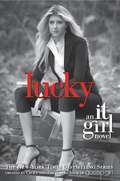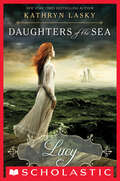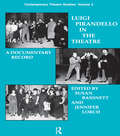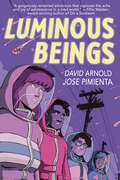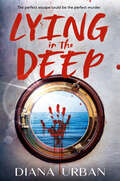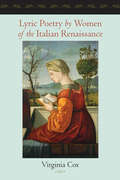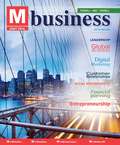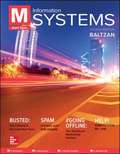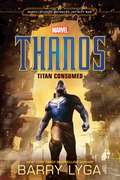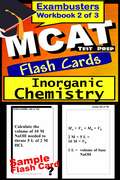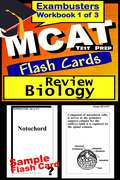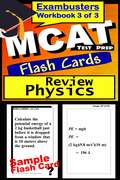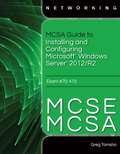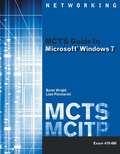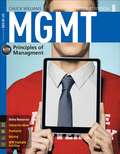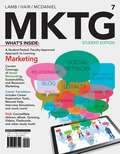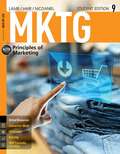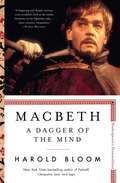- Table View
- List View
Lucky: An It Girl Novel (It Girl #5)
by Cecily Von ZiegesarJenny Humphrey has attended some crazy parties at Waverly Academy, but none as hot as the bash at Miller farm, where the barn went up in flames. Literally. So when Dean Marymount announces that someone is going to be expelled, it's every owl for him- and herself. Tensions are rising, rumors are flying, and pretty soon everyone is a suspect. Jenny is worried about her adorable, shaggy-haired new crush, Julian, whose lighter was found at the scene of the crime. Callie is afraid she and Easy will both get kicked out, because they were in the barn--together--when it caught fire. And Tinsley knows she'll take the heat for organizing the wild party in the first place. Luckily she's come up with a way to keep from getting in trouble: by blaming Jenny. Of course. After all, Waverly's girls always fight fire with fire. But watch out, ladies--in a battle like this, someone's bound to get burned.
Lucy, Uncensored
by Mel Hammond Teghan HammondA road trip through gender identity, self-expression, and the thorny process of figuring out where you fit after high school as an out-and-proud transgender teen.Lucy imagines college as more than a chance to party with other drama nerds and be roommates with her best friend Callie. College will be her fresh start. For the first time, she'll be able to introduce herself as Lucy to people she hasn't gone to school with since kindergarten. Plus, she happens to live an hour away from one of the most prestigious theater programs in the country. She's always dreamed of going to Central, but when she finally has a chance to visit, it's not what she imagined.While Lucy and Callie are on their campus tour, two kids from their high school make the typical transphobic comments Lucy's gotten used to in her small town. She starts to worry that her dream school might end up being High School 2.0. What if she belongs somewhere else? Somewhere that she can truly have a fresh start?When Lucy finds a beautiful school with a great theater program on a list of the most LGBTQ+ friendly colleges, it seems like fate—except that the school is hundreds of miles away. And there's something unexpected about it: it's a women's college. As far as she can tell, they've never admitted a trans woman. Will they let Lucy in? There&’s only one way to find out: road trip!
Lucy: Lucy (Daughters Of The Sea #3)
by Kathryn LaskyA choice between love and survival . . .Lucy's family is excited to spend the summer in Bar Harbor, Maine. Her minister father is pleased to preside over such a prestigious congregation, and his social-climbing wife is ecstatic at the chance to find a rich husband for her daughter. Yet Lucy wants nothing to do with the Bar Harbor social scene; she's simply excited to spend the summer by the sea, watching the waves from her favorite spot on the cliff. Despite having never gone swimming, Lucy feels an intense connection to the ocean, and meets a handsome ship-builder who shows Lucy a world she's never known, yet somehow always longed for. However, her mother will stop at nothing to keep Lucy and the ship builder apart, even if it means throwing Lucy into the arms of a wealthy man with a dangerous secret. Can Lucy break free and embrace her destiny as a daughter of the sea? Or is she doomed to waste away in a gilded cage, slowly dying of a broken heart?
Luigi Pirandello in the Theatre
by Susan Bassnett Jennifer LorchFirst Published in 1993. Routledge is an imprint of Taylor & Francis, an informa company.
Luminous Beings: A Graphic Novel
by David Arnold"A gorgeously rendered adventure that captures the ache and joy of adolescence in a mad world."--Tillie Walden, award-winning author of On a SunbeamTy and Burger have known each other since before they could walk. But this shared history is nothing compared to their plans for the future: step one, make a killer documentary about humanity&’s recent brush with extinction; step two, apply to film school together; step three, achieve legendary status as the next great filmmaking duo. But Ty has a secret that will ultimately shake the foundations of their friendship and force them both to wonder if growing up means letting go of the people they once were.With heads full of bioluminescence and hearts full of fury, &“squizzies&” have one thing on their tiny rodent brains: global annihilation. Their reign of terror may be a thing of the past, but Ty and Burger are determined to chronicle the perseverance of the human race in the wake of the &“squirrel-pocalypse.&” With friends Miles and Fib, they embark on an overnight excursion through rowdy nightclubs, once-familiar neighborhoods, perilous castles, and off-grid RVs, all the while, recording quiet lives of love and loss in a strange new world.Set over the course of a single day, Luminous Beings explores the many facets of friendship and love, the heavy burden of a well-kept secret, the boundless tenacity of the human spirit, and, yes, the furriest of all zombified mammals. But don&’t worry, it&’s not the end of the world. Just the end of the squirrel
Lush
by Natasha FriendNatasha Friend is a Judy Blume for today -- clearly evident in this remarkable new novel about a girl whose father is an alcoholic and how she and her family learn to deal with his condition.It's hard to be a 13-year-old girl. But it's even harder when your father's a drunk. It adds an extra layer to everything -- your family's reactions to things, the people you're willing to bring home, the way you see yourself and the world. For Samantha, it's something that's been going on for so long that she's almost used to it. Only, you never get used to it. Especially when it starts to get worse...
Lying Out Loud: A Companion to The DUFF
by Kody KeplingerA companion to Kody Keplinger's debut novel, THE DUFF!Sonny Ardmore is an excellent liar. She lies about her dad being in prison. She lies about her mom kicking her out. And she lies about sneaking into her best friend's house every night because she has nowhere else to go. Amy Rush might be the only person Sonny shares everything with -- secrets, clothes, even a nemesis named Ryder Cross. Ryder's the new kid at Hamilton High and everything Sonny and Amy can't stand -- a prep-school snob. But Ryder has a weakness: Amy. So when Ryder emails Amy asking her out, the friends see it as a prank opportunity not to be missed. But without meaning to, Sonny ends up talking to Ryder all night online. And to her horror, she realizes that she might actually like him. Only there's one small catch: He thinks he's been talking to Amy. So Sonny comes up with an elaborate scheme to help Ryder realize that she's the girl he's really wanted all along. Can Sonny lie her way to the truth, or will all her lies end up costing her both Ryder and Amy?
Lying in Bed
by Polly SamsonDo you cover up or reveal it all; seek revenge or just reassurance; let the truth be naked as the day or cloaked in a night-time story? The men and women of Polly Samson's debut fiction all have stories to tell, pasts to forget, futures to forge. Manipulative or meek, used or using, all are aware of the power of truth, deception and little white lies to get what they want or sometimes what they deserve. Some are concerned with the economies of speech, those little 'kindnesses' which protect our loved ones but really ourselves; some investigate the warped logic which adults serve out to children to keep them 'innocent'; all are concerned with the beds we make and the lies we tell in them. . .
Lying in the Deep
by Diana UrbanA juicy thriller of jealousy, love, and betrayal set on a Semester at Sea-inspired cruise ship, with a diverse cast of delightfully suspicious characters who&’ll leave you guessing with every jaw-dropping twist.After being jilted by her ex-boyfriend and best friend, Jade couldn't be more ready to embark on the adventure of a lifetime—11 countries in 4 months, all from the luxurious Campus on Board ship—and to wedge an entire globe between her and the people who broke her heart.But when Jade discovers the backstabbing couple are also setting sail, her obsession with them grows and festers, leading to a shocking murder. And as their friends begin to drop like flies, Jade and her new crush must race to clear her name and find the killer they&’re trapped at sea with….before anyone else winds up in body bags.Perfect for readers of Natalie D. Richards, E. Lockhart, and Karen McManus!
Lyric Poetry by Women of the Italian Renaissance
by Virginia CoxBilingual, annotated edition of more than 200 poems by Italian Renaissance women, many of which have never before been published in English.Outstanding Academic Title, ChoiceLyric Poetry by Women of the Italian Renaissance is the first modern anthology of verse by Italian women of this period to give a full representation of the richness and diversity of their output. Although familiar authors such as Vittoria Colonna, Gaspara Stampa, and Veronica Gambara are well represented, half of the fifty-four poets featured are unknown even to many specialists. Especially noteworthy is an extensive selection of verse from the period following 1560, which has received little or no critical attention. This later, strikingly experimental, proto-Baroque tradition of verse is reconstructed here for the first time.Virginia Cox creates both a scholarly teaching resource and a collection of poetry accessible to general readers with no previous knowledge of the Italian poetic tradition. Each poem is presented in its original language, accompanied by a translation and commentary. An introduction traces the history of Italian lyric poetry from the fifteenth to the seventeenth century. Cox also provides a guide to meter, rhythm, and rhyme, as well as a glossary of rhetorical terms and a biographical dictionary of authors.Organized thematically, this book offers poems about love, religion, and politics; verse addressed to patrons, friends, family, and places; and polemical and correspondence verse. Four languages are represented: Greek, Latin, literary Tuscan of various levels of standardization, and the stylized rustic dialect of pavan. The volume contains more than 200 poems, of which about a quarter have never before been published in a modern edition and more than a third have not previously been available in English translation."Exhaustive and insightful... This is an amazing book, a major achievement in the field of women's studies."—Renaissance Quarterly, reviewing Women’s Writing in Italy, 1400–1650
Lysimachus: A Study in Early Hellenistic Kingship
by Dr Helen Lund Helen S. LundAlthough shortlived, Lysimachus' Hellespontine empire foreshadowed those of Pergamum and Byzantium. Lund's book sets his actions significantly within the context of the volatile early Hellenistic world and views them as part of a continuum of imperial rule in Asia minor. She challenges the assumption that he was a vicious, but ultimately incompetent tyrant.
M: Business
by Linda Ferrell O. C. Ferrell Geoffrey HirtWith obstacles put in place to question a potential leader's ethics, world view and career outlook, how does a future leader rise to the top while overcoming obstacles? M: Business brings clarity to what business is about. Its design provides a cutting edge approach to business, and its technology components offer an active learning environment, allowing students to envision a prosperous career in business.
M: Information Systems
by Paige BaltzanM: Information Systems provides the foundation that will enable students to achieve excellence in business, whether they major in operations management, manufacturing, sales, marketing, etc. M: Information Systems is designed to give students the ability to understand how information technology can be a point of strength in an organization.
MARVEL's Avengers: Titan Consumed
by Barry LygaIn Avengers: Infinity War, a threat emerged from the cosmos--Thanos, a ruthless warlord who plans to collect all six Infinity Stones. Joined by his formidable allies, he will be near-unstoppable at achieving his goal. The Avengers, the Guardians of the Galaxy, Doctor Strange and Spider-Man must join forces and fight side by side to stop Thanos while the fate of the Earth and the universe lays in the balance.In this new original novel by bestselling author Barry Lyga, learn the origins of the most feared force in the universe, and see how Thanos became the Titan consumed by his quest for power. ©2018 MARVEL.
MCAT Test Prep Flash Cards: Inorganic Chemistry (Exambusters MCAT Workbook #2 of 3)
by Ace Inc.<P><P><i>Advisory: Bookshare has learned that this book offers only partial accessibility. We have kept it in the collection because it is useful for some of our members. Benetech is actively working on projects to improve accessibility issues such as these.</i><P><P> 700 questions and answers. Essential chemistry formulas and concepts you need. <P><P>Topics: Metric System, Matter, Atoms, Formulas, Moles, Reactions, Elements, Chemical Bonds, Phase Changes, Solutions, Reaction Rates, Acids and Bases, Oxidation and Reduction, Introduction to Organic <P>EXAMBUSTERS MCAT Prep Workbooks provide comprehensive, fundamental MCAT review--one fact at a time--to prepare students to take practice MCAT tests. Each MCAT study guide focuses on one specific subject area covered on the MCAT exam. From 300 to 600 questions and answers, each volume in the MCAT series is a quick and easy, focused read. Reviewing MCAT flash cards is the first step toward more confident MCAT preparation and ultimately, higher MCAT exam scores!
MCAT Test Prep Flash Cards: Review Biology (Exambusters MCAT Workbook #1 of 3)
by Ace Inc.<P><P><i>Advisory: Bookshare has learned that this book offers only partial accessibility. We have kept it in the collection because it is useful for some of our members. Benetech is actively working on projects to improve accessibility issues such as these.</i><P><P> 450 questions and answers. <P><P>Topics: Cells, Biochemistry and Energy, Evolution, Kingdoms: Monera, Fungi, Protista, Plants, Animals; Human: Locomotion, Circulation, Immunology, Respiration, Excretion, Digestion, Nervous System <P>EXAMBUSTERS MCAT Prep Workbooks provide comprehensive, fundamental MCAT review--one fact at a time--to prepare students to take practice MCAT tests. Each MCAT study guide focuses on one specific subject area covered on the MCAT exam. From 300 to 600 questions and answers, each volume in the MCAT series is a quick and easy, focused read. Reviewing MCAT flash cards is the first step toward more confident MCAT preparation and ultimately, higher MCAT exam scores!
MCAT Test Prep Flash Cards: Review Physics (Exambusters MCAT Workbook #3 of 3)
by Ace Inc.<P><P><i>Advisory: Bookshare has learned that this book offers only partial accessibility. We have kept it in the collection because it is useful for some of our members. Benetech is actively working on projects to improve accessibility issues such as these.</i><P><P> 600 questions and answers. Sample problems. <P><P>Topics: Metric System, Motion and Forces, Work and Energy, Fluids, Sound, Light and Optics, Static Electricity, D.C. and A.C. Circuits, Magnetism <P>EXAMBUSTERS MCAT Prep Workbooks provide comprehensive, fundamental MCAT review--one fact at a time--to prepare students to take practice MCAT tests. Each MCAT study guide focuses on one specific subject area covered on the MCAT exam. From 300 to 600 questions and answers, each volume in the MCAT series is a quick and easy, focused read. Reviewing MCAT flash cards is the first step toward more confident MCAT preparation and ultimately, higher MCAT exam scores!
MCSA Guide to Installing and Configuring Microsoft Windows Server 2012 R2
by Greg TomshoThis book gives you in-depth coverage of the 70-410 certification exam objectives and focuses on the skills you need to install and configure Windows Server 2012/R2.
MCTS Guide to Microsoft Windows 7 (exam # 70-680)
by Byron Wright Leon PlesniarskiIntroducing a complete guide to deploying and managing Windows 7 that is suitable for IT professionals and students alike! This instructional text provides the information users need to successfully migrate to Windows 7 and immediately derive benefits from it. Readers will learn about the new features in Windows 7, such as advanced security, and how those features compare to Windows Vista and Windows XP. Valuable for professionals, but written in a way that is understandable to the novice networking student, this informative guide examines Windows 7 in a thorough and logical manner making the information easy to understand and preparing readers for Microsoft's MCTS Exam #70-680. The hands-on activities and case projects help learners practice new skills, and review questions and key terms reinforce important information. The accompanying CD provides valuable certification preparation material, including test preparation software. With a section devoted to troubleshooting, this text also doubles as a manual that professionals can take on the job with them.
MGMT 8 - Principles of Management
by Chuck WilliamsMaster storyteller, award-winning educator, and accomplished author Chuck Williams uses a captivating narrative style to illuminate today's most important management concepts and practices that really work in today's workplace. To keep the information personally relevant, Dr. Williams weaves more than 50 unforgettable examples and stories into each chapter in this edition. Proven learning features and self-assessments keep concepts intriguing and applicable to students' daily lives. As this edition's fresh scenarios, new cases, and new video cases reflect the latest management innovations at work in well-known organizations throughout the world, readers gain a better understanding of what they need to ensure managerial success.
MGMT4 (2011 Student Edition)
by Chuck WilliamsStudent-tested and faculty-approved, MGMT4 2011 EDITION offers an innovative approach to teaching principles of management. This paperback provides a complete suite of fresh learning aids to accommodate the busy and diverse lifestyles of today's learners, including downloadable flashcards, videos, MP3 review podcasts, and quick quizzes that allow students to study wherever they are and whenever they have time. Designed to reach today's students, MGMT says it all in four letters, reflecting how this unique solution speaks in the language of today's learner. MGMT4 started with student conversations, focus groups, interviews, surveys, and input from nearly 150 faculty members like you. This innovative approach unites today's latest management research with author Chuck Williams' unique storytelling approach in a visually rich, yet professional, design that reads like a business periodical. MGMT4 provides a streamlined, concepts-driven format with optional exercises, new cases, and new practical applications that you can choose to use depending on your students' needs. MGMT4 2011 EDITION offers the engaging principles of management solution that you and your students have created together.
MKTG 7 (Marketing, 7th Edition)
by Carl Mcdaniel Charles W. Lamb Joseph F. HairThe book is introduces students to the world of Marketing and elaborates on market opportunities, product decisions, promotions etc.
MKTG Principles of Marketing (9th Edition)
by Carl Mcdaniel Charles W. Lamb Joseph F. HairMKTG 9 offers full coverage of course concepts through unique resources and features that reflect the natural study habits of students, accompanied by straightforward assignment options for instructors.
MKTG6
by Carl Mcdaniel Charles W. Lamb Joe F. HairCreated through a "student-tested, faculty-approved" review process with direct input from students and faculty, *MKTG6* is an engaging and accessible solution to accommodate the diverse lifestyles of today's learners. *MKTG6* employs up-to-date, relevant examples from a wide range of independent upstarts and larger companies students love. *MKTG6* also offers a dynamic range of web-based review and testing products to facilitate today's on-the-go lifestyle.
Macbeth: A Dagger of the Mind (Shakespeare's Personalities #5)
by Harold BloomFrom the greatest Shakespeare scholar of our time, comes a portrait of Macbeth, one of William Shakespeare’s most complex and compelling anti-heroes—the final volume in a series of five short books about the great playwright’s most significant personalities: Falstaff, Cleopatra, Lear, Iago, Macbeth.From the ambitious and mad titular character to his devilish wife Lady Macbeth to the moral and noble Banquo to the mysterious Three Witches, Macbeth is one of William Shakespeare’s more brilliantly populated plays and remains among the most widely read, performed in innovative productions set in a vast array of times and locations, from Nazi Germany to Revolutionary Cuba. Macbeth is a distinguished warrior hero, who over the course of the play, transforms into a brutal, murderous villain and pays an extraordinary price for committing an evil act. A man consumed with ambition and self-doubt, Macbeth is one of Shakespeare’s most vital meditations on the dangerous corners of the human imagination. Award-winning writer and beloved professor Harold Bloom investigates Macbeth’s interiority and unthinkable actions with razor-sharp insight, agility, and compassion. He also explores his own personal relationship to the character: Just as we encounter one Anna Karenina or Jay Gatsby when we are seventeen and another when we are forty, Bloom writes about his shifting understanding—over the course of his own lifetime—of this endlessly compelling figure, so that the book also becomes an extraordinarily moving argument for literature as a path to and a measure of our humanity. Bloom is mesmerizing in the classroom, wrestling with the often tragic choices Shakespeare’s characters make. He delivers that kind of exhilarating intimacy and clarity in Macbeth, the final book in an essential series.
